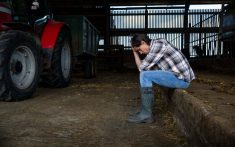Delivery of health and safety education aimed at the next generation in agriculture began in 2017 and now gets input from around the world.
The Ag Health and Safety Alliance is a non-profit organization with team members from the U.S., Canada and Australia and has a program model adapted for Denmark, Sweden, Romania and Nigeria.
Why it matters: The alliance aims to educate teenagers and young adults about farm safety using relatable methods.
Read Also

New Iridium technology helps block GPS spoofing
A tiny new chip will allow Iridium’s Positioning, Navigation and Timing (PNT) signals to be received much smaller devices, create a backstop against Global Positioning Systems (GPS) spoofing.
Alliance executive director and founder Carolyn Sheridan, based in Greenville, Iowa, began teaching health and safety programs in the early 1990s, working with farm families and developing health and safety programs for college students.
With the alliance, a safety program was developed to fit with “at your fingertips” learning, using a less tutorial approach that emphasizes peer-based sharing.
“We ask the students if they have a story to share about someone they know that’s been injured or killed on a farm,” says Sheridan, who’s also a registered nurse.
“It’s very rare that we don’t get at least one or more stories from the students, and we find this much more impactful than us sharing a story or showing a graphic picture.”
- Read more: Rush on planting can increase safety risks
She and David Sullivan, a safety professional and alliance director of programs, brought their health and safety program to the University of Guelph’s Ridgetown Campus in March and to nine other colleges in seven provinces.
They’ve found a tremendous amount of reciprocal knowledge comes from criss-crossing the continent or travelling overseas. Before their presentations, Sheridan and Sullivan have to learn about the country, province or region they’re visiting.

“This is in addition to a standardized 36-question pre-survey, and learning about the students from the instructor is key to the development of customized educational programs for each college class,” says Sullivan, who was born and raised in Australia but now lives in B.C.
“We like the saying ‘when you laugh, you relax and when you relax, you learn.’ We like our programs to be as fun and fully interactive as possible.”
The presenters use multiple presentation methods but no PowerPoint, opting instead for Motion graphics, VR360, interactive infographics and lots of humour.
The organization receives some of its funding and resource material from the provincial Workplace Safety & Prevention Services and is a vital link given the closure of the Ontario Farm Safety Association nearly 20 years ago. The alliance operates in similar fashion in other provinces as well as other countries.
The organization’s GearUp for Ag program features a core set of topics, yet it’s flexible enough to meet the stated goals of students and their instructor. They can cover topics like tractor rollovers or slow-moving vehicle scenarios, but most content is related to health and safety issues with an emphasis on prevention and use of personal protective equipment.
Sheridan and Sullivan recognize that health and safety awareness across Canada is good but could always be better. As with most programs, government-based or not, funding is key to development and outreach.
There are some differences across Canada in behaviour associated with agricultural health and safety but all countries have their pluses and minuses, they’ve found.
Program delivery means staying current and ahead of farm safety issues, and requires working with many health and safety organizations to produce resource material geared to safety or the rise in mental health concerns.
“We believe mental and physical health are equally important and we cover both topics in our programs,” says Sullivan. “With the recent focus on mental health in agriculture and in other industries, students seem to be more willing to discuss mental health openly and that’s a positive step in addressing this issue. We need to ask students if they are OK more often.”
Overall, 91 and 40 per cent of participants completed the pre- and post-surveys, respectively. Although the post-survey results seem lower, they’re higher in Canada than in other countries, including the U.S.















